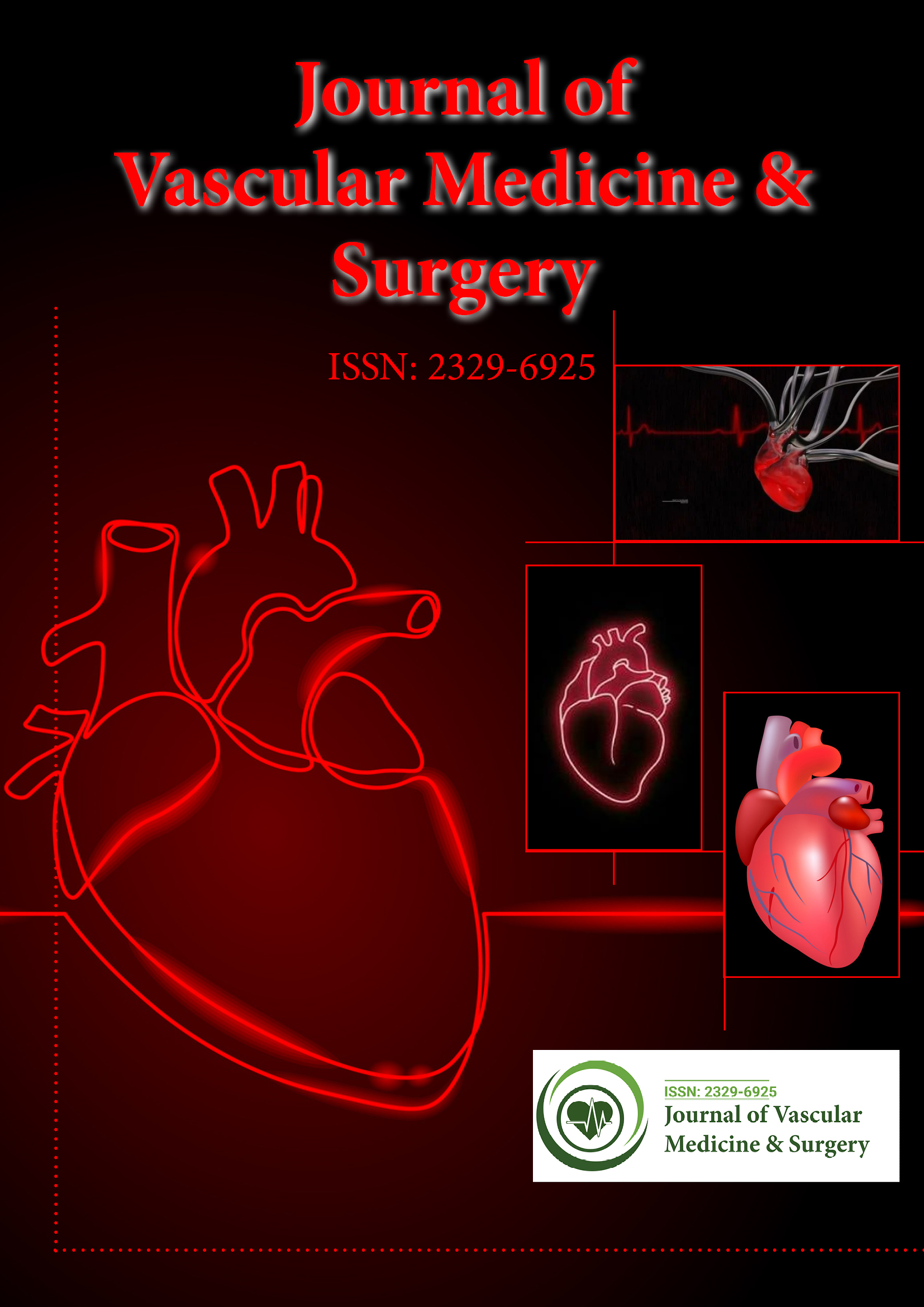Indexed In
- Open J Gate
- Academic Keys
- RefSeek
- Hamdard University
- EBSCO A-Z
- OCLC- WorldCat
- Publons
- Euro Pub
- Google Scholar
- SHERPA ROMEO
Useful Links
Share This Page
Journal Flyer

Open Access Journals
- Agri and Aquaculture
- Biochemistry
- Bioinformatics & Systems Biology
- Business & Management
- Chemistry
- Clinical Sciences
- Engineering
- Food & Nutrition
- General Science
- Genetics & Molecular Biology
- Immunology & Microbiology
- Medical Sciences
- Neuroscience & Psychology
- Nursing & Health Care
- Pharmaceutical Sciences
Commentary - (2022) Volume 10, Issue 1
Increased Early Sodium Contemporary Provokes Familial Atrial Traumatic Inflammation and Decreases Effectiveness of Sodium Channel Block
Horn M*Received: 07-Jan-2022, Manuscript No. jvms-22-11431; Editor assigned: 07-Jan-2022, Pre QC No. jvms-22-11431(PQ); Reviewed: 21-Jan-2022, QC No. jvms-22-11431; Revised: 24-Jan-2022, Manuscript No. jvms-22-11431(R); Published: 28-Jan-2022
Description
Atrial Fibrillation (AF) is the most common cardiac arrhythmia. Atrial fibrillation often develops due to the complication of cardiovascular disease in combination with existing atrial substrates. Familial early-onset AF allows identification of this substrate. Pathogenic manifolds of genes encoding ion channels are associated with familial atrial fibrillation. A point mutation M1875T in the SCN5A gene, which encodes the -subunit of the cardiac sodium channel Nav1.5, is associated with increased atrial excitability and familial atrial fibrillation. The development of a new mouse model with the Scn5aM1875T mutation allowed us to study this atrial substrate in detail. Methods and Results: Left atrial cardiomyocytes from newly generated Scn5aM1875T + / mice showed a selective increase in early (peak) cardiac sodium current measured by patch clamp. Microelectrode recordings of the intact left atrium showed larger action potential amplitudes and faster peak velocities at upstroke. The line was investigated using optical mapping. When challenged with the sodium channel blocker flecainide, Scn5aM1875T + / left atrium had less conduction velocity reduction than the corresponding wild-type atrium.Electrocardiography and echocardiography, and in vivo analysis using cardiac histology, ruled out overt hypertrophy or heart failure in young adults.
Signs and Symptoms
People with atrial fibrillation (Afib) are unaware of their symptoms. People with symptoms of atrial fibrillation may have the following signs and symptoms:
Sensations of fast, fluttering, or throbbing heartbeats (palpitations)
• Chest pain
• Dizzy
• Malaise
• Sleepiness
• Decreased training ability
• Dyspnea
• Weaknesses
Causes Of Atrial Fibrilliation
Problems with the coronary heart`s shape are the maximum not unusualplace motive of atrial traumatic inflammation. Possible reasons of atrial traumatic inflammation include:
• Coronary artery sickness
• Heart assault
• Heart illness that you are born with (congenital coronary heart illness)
• Heart valve troubles
• High blood pressure
• Lung diseases
• Physical pressure because of surgery, pneumonia or different illnes
Risk Factors
Things which can boom the danger of atrial traumatic inflammation (A-fib) include:
Age
The older someone is, the more the danger of growing atrial traumatic inflammation.
Heart sickness
Anyone with coronary heart sickness — along with coronary heart valve troubles, congenital coronary heart sickness, congestive coronary heart failure, coronary artery sickness, or records of coronary heart assault or coronary heart surgery — has an expanded danger of atrial traumatic inflammation.
High blood pressure
Having excessive blood pressure, especially if it is now no longer properly managed with life-style adjustments or medications, can boom the danger of atrial traumatic inflammation.
Thyroid sickness
In a few human beings, thyroid troubles may also cause coronary heart rhythm troubles (arrhythmias), together with atrial traumatic inflammation.
Prevention
• Caregiving for a person with atrial traumatic inflammation
• Show extra associated content
• Associated Procedures
• Ablation therapy
• Atrial traumatic inflammation ablation
• AV node ablation
Citation: Horn M (2022) Increased Early Sodium Contemporary Provokes Familial Atrial Traumatic Inflammation and Decreases Effectiveness of Sodium Channel Block. J. Vasc. Surg. 10:438.
Copyright: © 2022 Horn M. This is an open-access article distributed under the terms of the Creative Commons Attribution License, which permits unrestricted use, distribution, and reproduction in any medium, provided the original author and source are credited.

